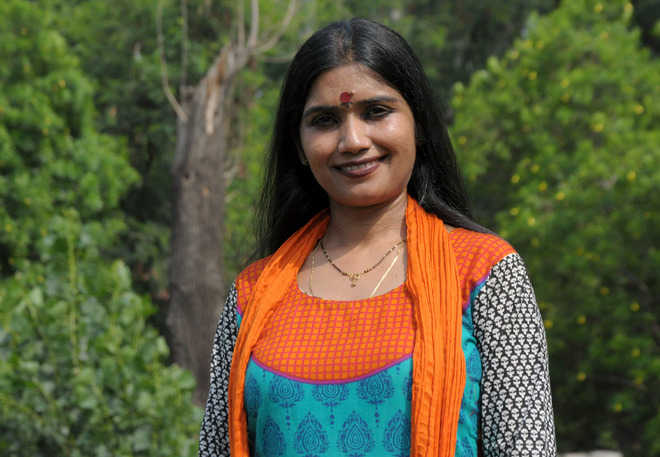
Meenu Thakur
Manika Ahuja
Ever wondered why majority of Indian classical dance forms make use of jingling anklets? Well, you might be able to hit the bull’s eye with a guess that it helps highlight the dancer’s complex rhythmic footwork, but that is only half the story. “Not only do ghungroos help dancers’ footwork reach the audience, foot bells hold a sacred place in every Indian classical dancer’s life. For us, their pious sound is a way to reach God,” informs Indian Kuchipudi dance exponent-cum-choreographer, Meenu Thakur.
In Chandigarh to hold Kuchipudi workshop demonstrations at Government schools as part of Society for the Promotion of Indian Classical Music and Culture Amongst Youth program (SPIC MACAY), Thakur shares notes on re-establishing the fading connect of youth with classical culture, and the dismal number of boys opting for the traditional dance form.
More than an ornament
Thakur highlights the sacred value of ghungroos, worn while executing traditional performances of various classical Indian dance forms, such as Bharatnatyam, Kathak, Kuchipudi, and Odissi. “You would know that all Indian classical dance forms are essentially a rich sadhna (meditation). We dancers aim to reach God through our movements,” contends Thakur, with a twinkle in her eye. She continues, “Just like devotees ring the temple bells hoping that the sound would reach their God, ghungroos hold a similar significance for us dancers. They are sacred. After a performance concludes, we place our anklets in a separate bag and revere them.”
Females outnumbering males
She makes an interesting observation as she informs that back in time, “Male gurus outnumbered their female counterparts in various traditional dance forms. In fact, men used to disguise as women in classical dance performances, until male gurus decided to induct female performers. Unfortunately, boys today have a different mindset. They think dancing is ‘a feminine thing to do’, the gender-stereotyping is wired in their system. It is rather unfortunate.”
Snapping out of the gloomy disposition, she pops a smile and chooses to look at the brighter side of life, “On the plus side, it is good in a way; females are more expressive and graceful vis-a-vis men,” laughs the dancer, who unifies Purusha Sampradaya (male dance tradition) with Anuroopa (transformation of male dance style in female interpretation) as part of her Kuchipudi dance performances, which she terms as “a combination of vigour and grace.”
Youngsters, take note
According to Thakur, for youngsters to acknowledge India’s rich heritage and culture, parents need to do away with the notion that ‘dance should only be a hobby and nothing beyond.’ The Kuchipudi exponent, who also runs a dance academy —Suramya in Delhi — observes that people also need to understand that “there can be no gyan without a guru.”



























